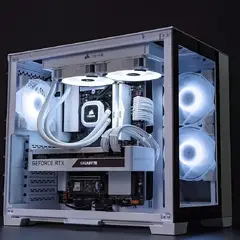Undervolting CPU’s
Go to solution
Solved by badreg,
Undervolting is done to optimize temperatures and power draw. Think of it as overclocking, but instead of optimizing for performance, the goal is optimizing for efficiency.
It is most effective for laptops where thermal throttling is more common and in mining operations where reduced power draw increases profits. In a desktop platform with a locked CPU, there really isn't a good reason to undervolt, since you are not likely to run into thermal issues, and you would be introducing potential instability with no real tangible benefits.





















Create an account or sign in to comment
You need to be a member in order to leave a comment
Create an account
Sign up for a new account in our community. It's easy!
Register a new accountSign in
Already have an account? Sign in here.
Sign In Now